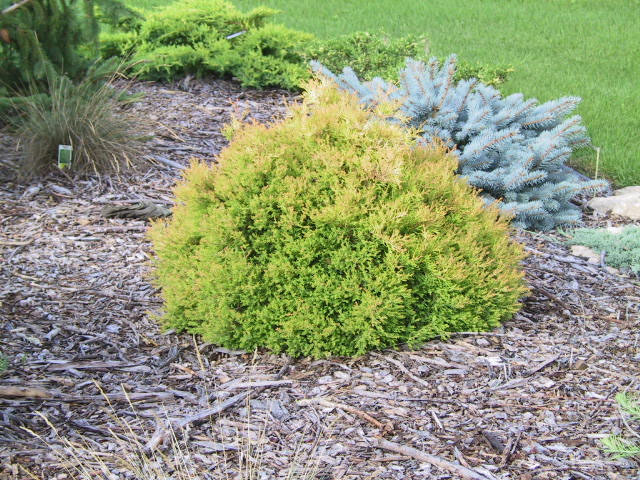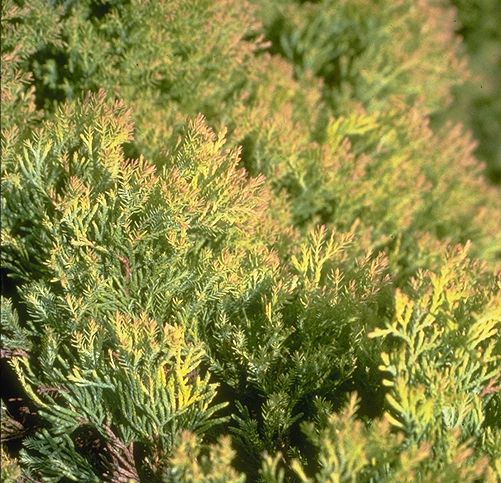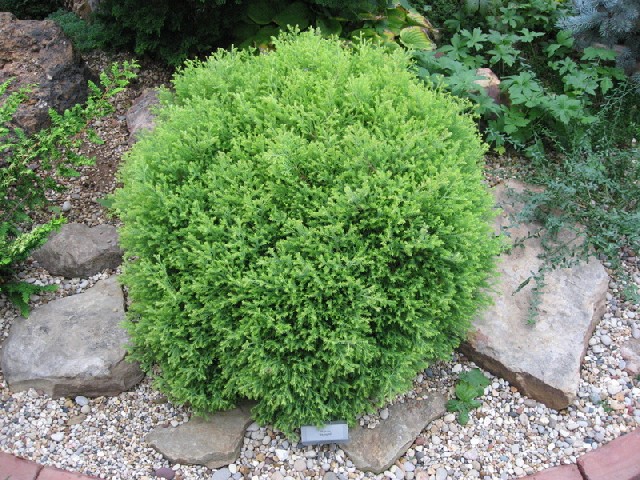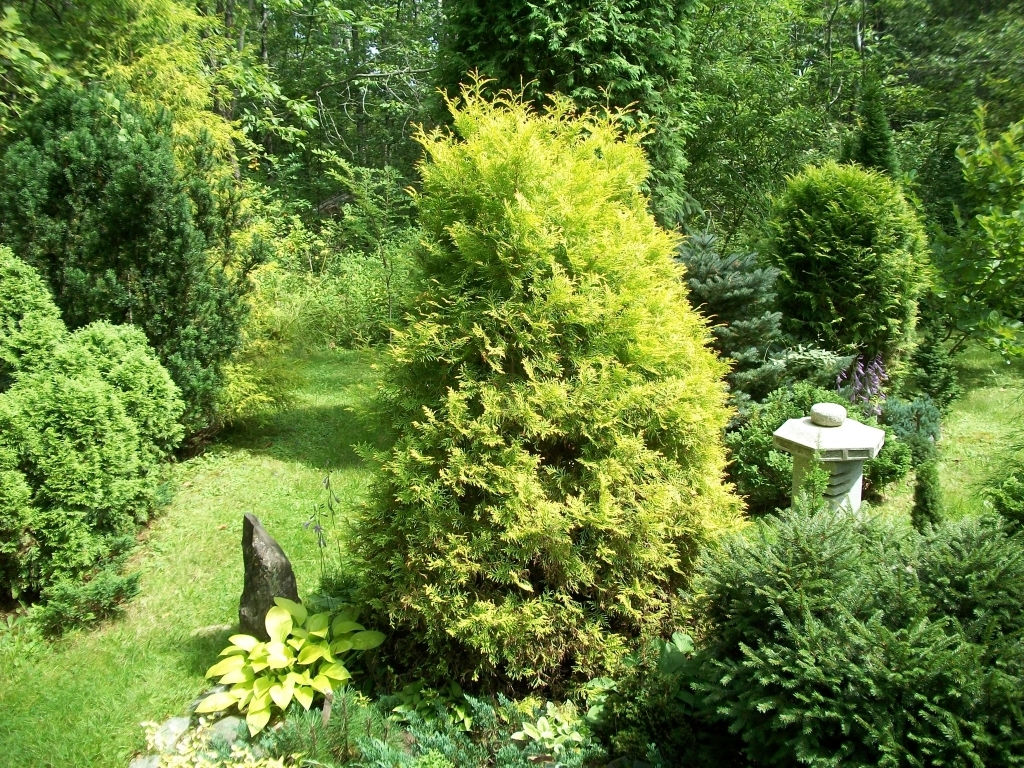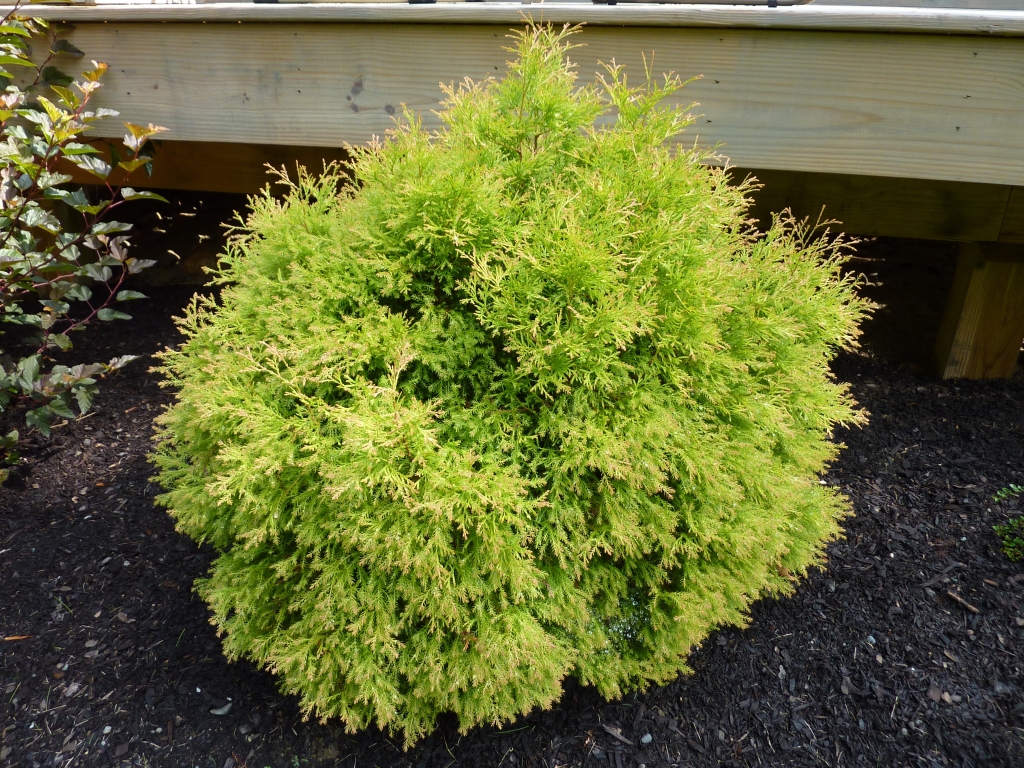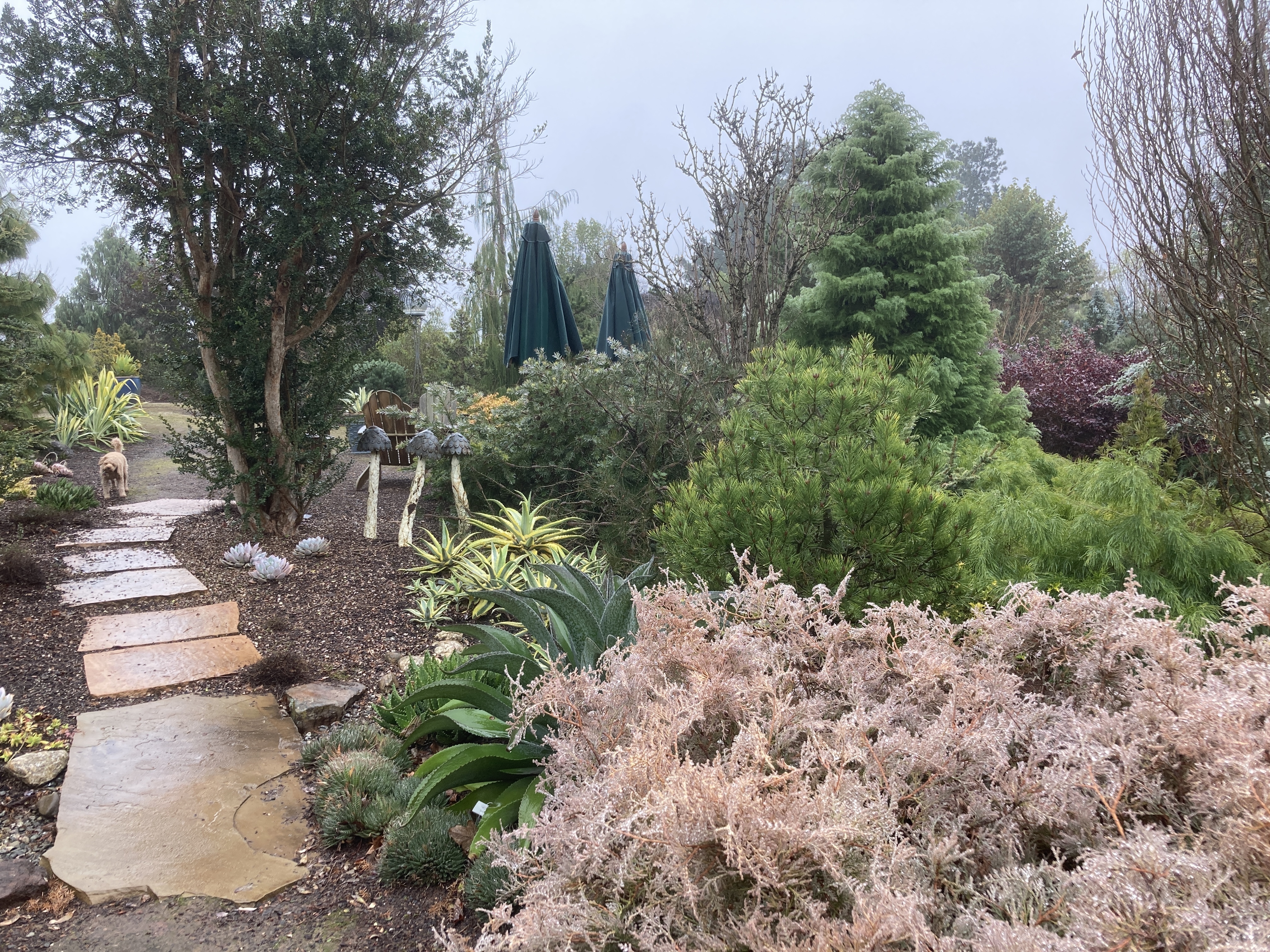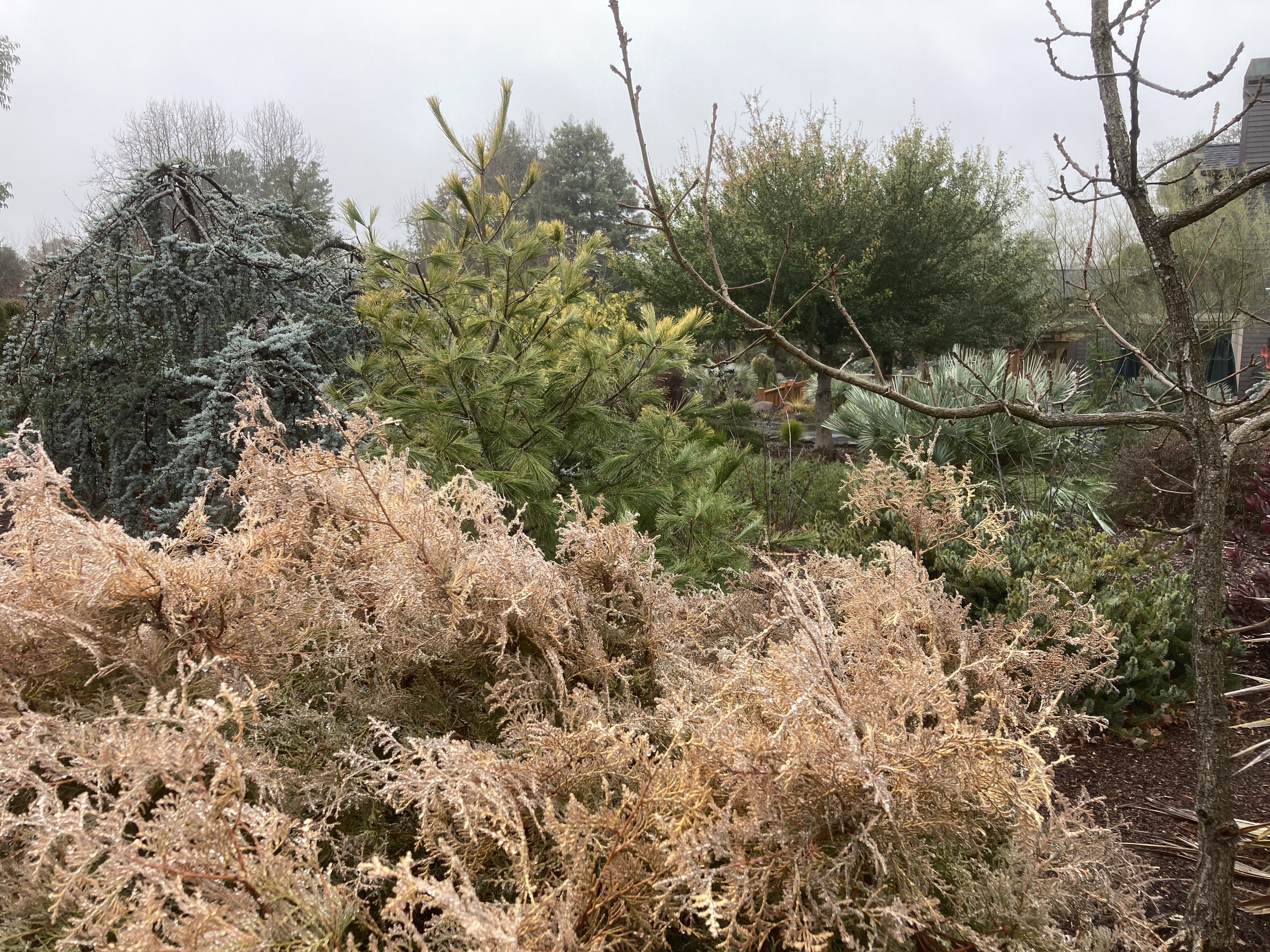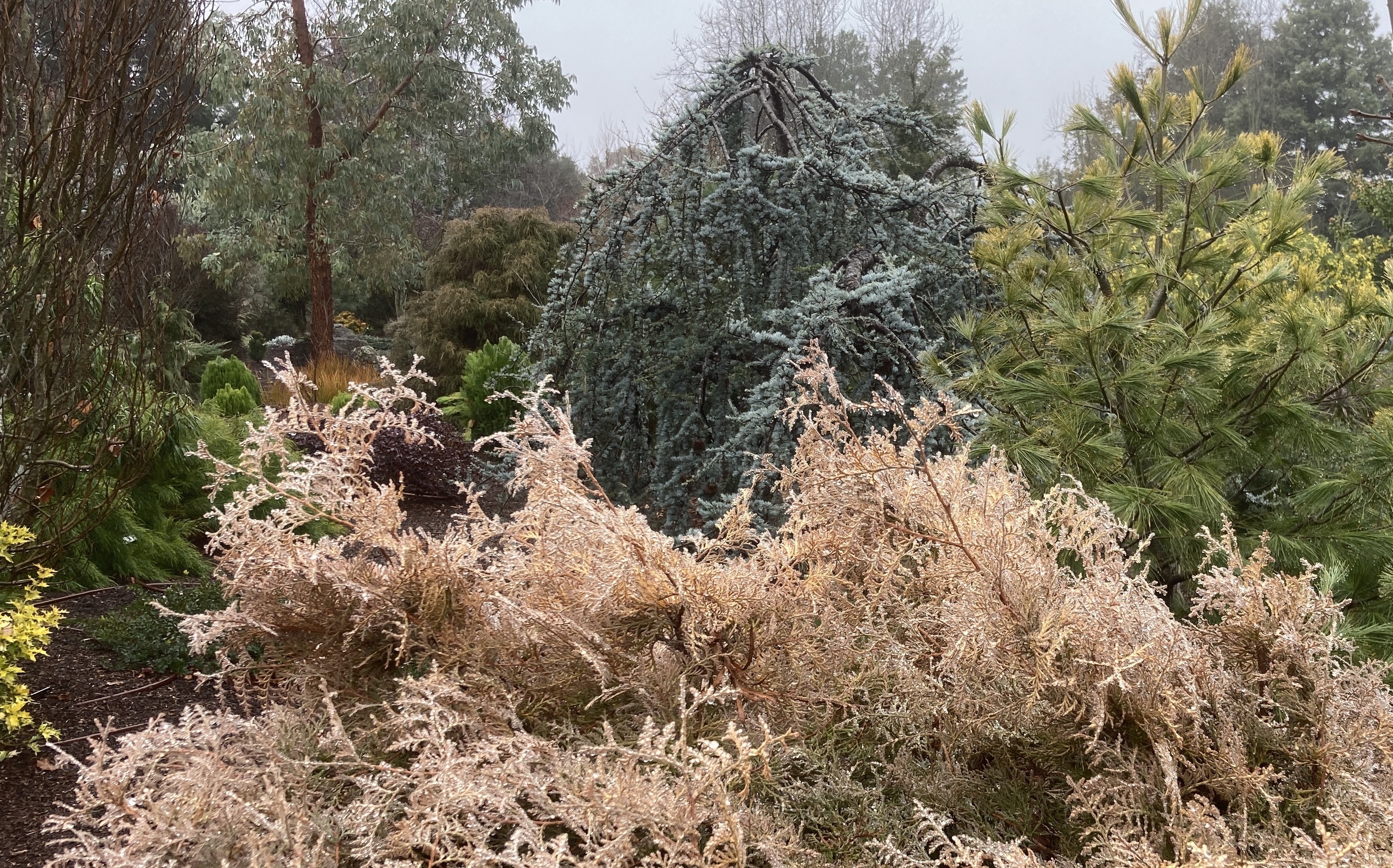Thuja occidentalis 'Rheingold' is one of the most popular selections of Arborvitae in the nursery trade. It is distinctive when young through its dense globose form with coppery-yellow juvenile foliage. In summer, the color is more golden-yellow, while winter brings out the strong coppery overtones. Its best color develops when planted in full sun.
With age, plants will develop more adult-type, scaly foliage and assume more of a broadly upright structure. After 10 years, a mature specimen will measure 6 feet (2 m) tall and 4.5 feet (1.5 m) wide, an annual growth rate of 6 to 8 inches (15 - 20 cm). It's size and structure is easily controlled though annual shearing. If an older plant gets to the point where the adult-type foliage becomes overly dominant, it should no longer be considered an example of 'Rheingold;' rather it should be considered to have reverted into its parent form, 'Ellwangeriana Aurea.'
This cultivar originated as an exceptionally stable, juvenile-foliage branch mutation, found around 1900 on a specimen of Thuja occidentalis 'Ellwangeriana Aurea' by Rud Vollert, a nurseryman from Lüsbeck, Germany. Apparently such mutations are quite common on "Ellwangeriana-type" arborvitae with differences mainly in stability. It is reported that propagating adult-type foliage from 'Rheingold' will still result in juvenile-foliage, suggesting its unique DNA.
Also noteworthy is that nearly every reference in print states that 'Rheingold' was a seedling selection. Given that it was introduced over 100 years ago, this claim is impossible to confirm or refute. This reference claiming that it originated as a result of branch mutation is based on common sense and observation.
